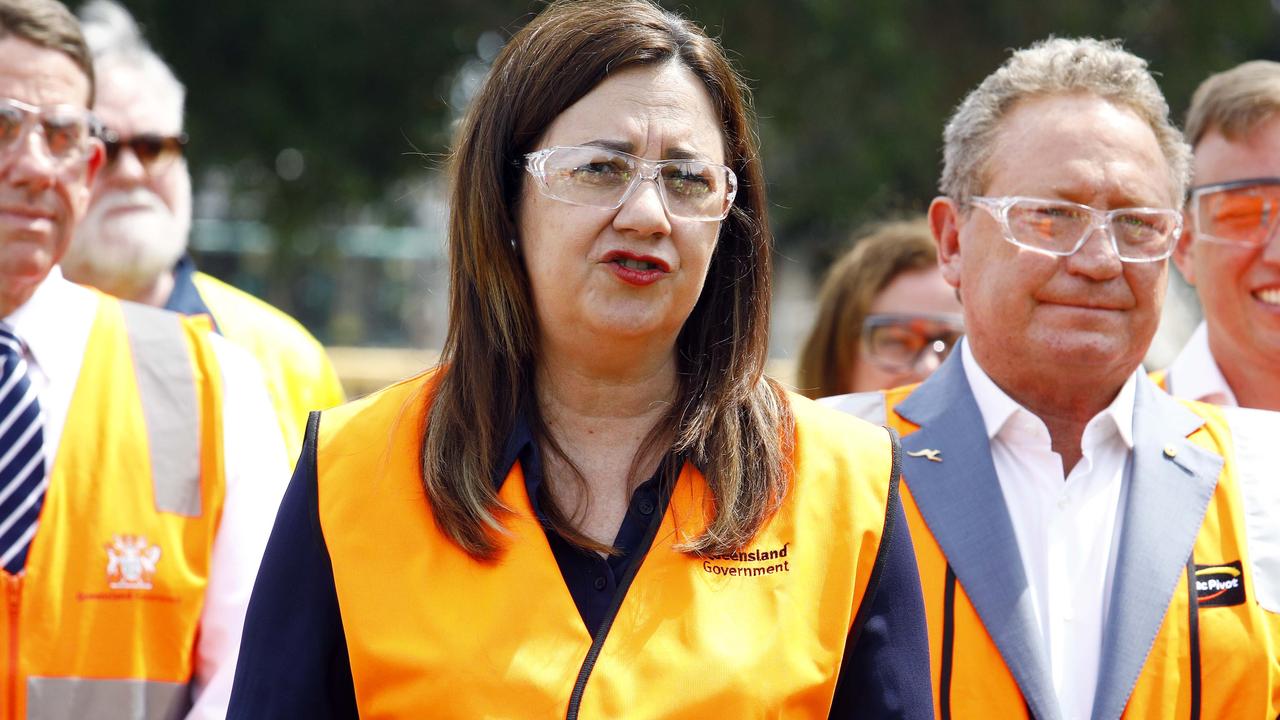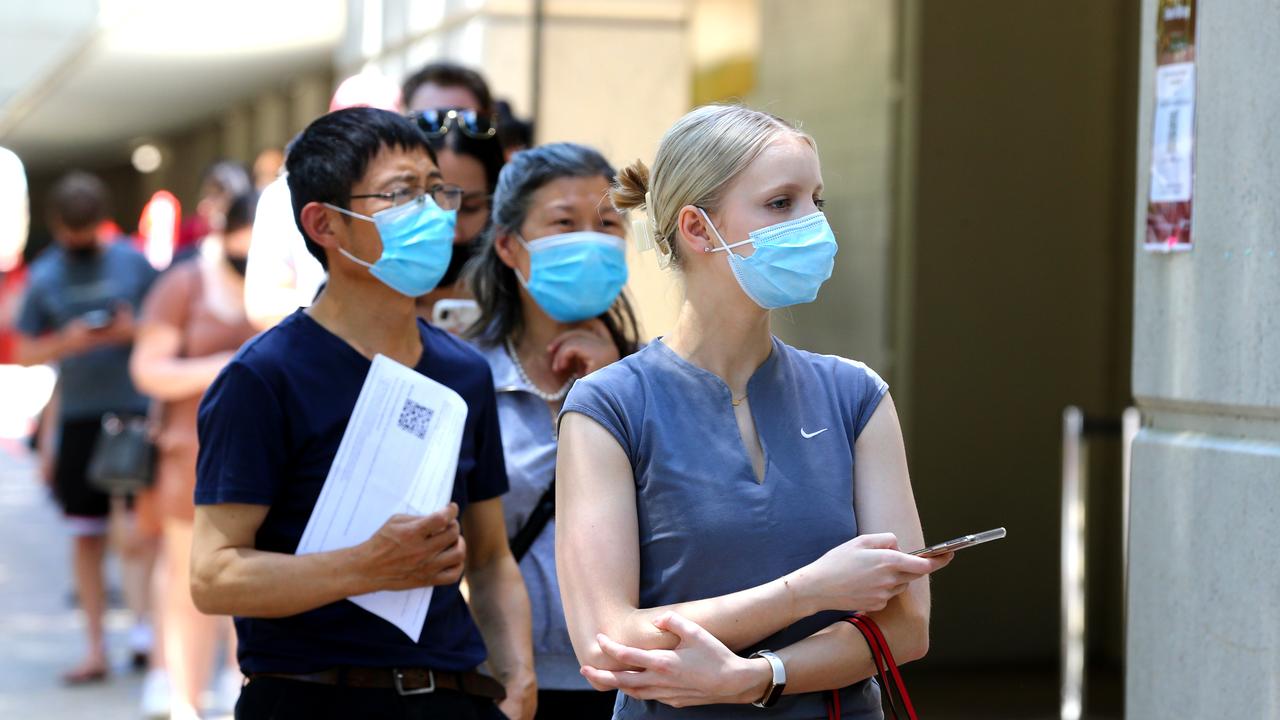Higher Queensland vaccination rates needed to secure economic recovery and mandatory jabs may help
Queensland may need to introduce mandatory vaccinations in a bid to save the state’s economy, which is set to be derailed by hesitancy.
Vaccine hesistancy in Queensland risks derailing the state’s bright future as others continue to open up, a new report reveals.
The Sunshine State has been very successful in keeping Covid-19 out of the state and this has helped to deliver some of the lowest unemployment rates in a decade and a housing construction boom.
However, Deloitte Access Economic’s latest business outlook report suggests the state’s short-term future is being clouded by the government’s border policy and vaccine hesitancy.
The report noted that Queensland had the highest share of people unwilling to be vaccinated, and was home to the second-highest share of people yet to make up their minds.
“Vaccinations are Australia’s ticket out of the pandemic,” the report noted.
“And if Queensland remains a laggard on vaccine uptake, the positives for the state’s outlook will quickly dwindle.”
About 70 per cent of Queenslanders have had their first dose with 52 per cent fully vaccinated, a similar rate to Western Australia, where 69 per cent have had a first dose, and 52 per cent are fully vaccinated.
New South Wales, South Australia, Tasmania, Victoria, Northern Territory and the Australian Capital Territory, all have higher rates of vaccination.
The report said there was a good case for mandating vaccines in Australia (with exemptions for those on health or religious grounds) especially in states like Queensland that did not have outbreaks to drive take-up.
While some states such as NSW and Victoria have introduced mandates for those working in schools, hospitals and child care, Queensland as well as Western Australia and South Australia have not done the same.
Queensland Premier Annastacia Palaszczuk has also not set a date for re-opening the state’s borders, something that could encourage more people to get vaccinated.
“Fewer jabs will equal fewer jobs,” the report said. “Absent further vaccine mandates, that could slow and cap the job recovery.”
The report said Queensland’s border closures hurt it more than other Covid-free states such as Western Asutralia because of disruptions to the activity between the large amount of people who usually cross the border every day.

The tourism industry has also suffered due to the loss of domestric and international travellers.
“Locals are making up for some of this lost demand, but it’s a far cry from normal times,” the report said.
High coal prices are giving the state a boost but other commodities like iron ore have seen a sharp decline, partially driven by the slowing of the Chinese economy. The same curbs on steel manufacturing in China, which are hurting iron ore, could soon spill over to coal.
Longer term the outlook is more promising with demand for hydrogen expected to boom in coming years from China, Japan and Korea – and Queensland gearing up to be a key supplier in the market.
“This could be the precipice of the next big export for the state as the world shifts towards carbon neutrality. What’s more, it could provide a resurgence for the state’s regional areas.”
Money for infrastructure ahead of the 2032 Olympics is also expected to flow in the coming years.
On the job front, Queensland has some of its lowest unemployment in a decade. And unlike in NSW and Victoria, the report noted the unemployment is low for good reasons (more jobs) rather than bad ones (locked down and unable to get out the front door to look for a job).
NSW’s recovery reliant on vaccinations
In New South Wales, high vaccination rates could help the state see a rapid recovery in 2022, although this will depend on what happens with hospitalisations and deaths.
“As we saw last year, the newfound freedoms should see consumer spending bounce back relatively swiftly – in perfect timing for the Christmas rush,” the report said.
It noted that property prices in Sydney have increased by almost a fifth since the start of the pandemic but there were some signs the market was slowing, possibly due to weakening affordability.
“As a result, market activity is expected to reduce through the second half of 2021 and take some heat out of house price growth,” the report said.
“But that’s a slowing, not a crash. And the reopening of international borders (and migrants) will keep demand strong.”
Education and tourism are still suffering due to closed international borders and the report said there was likely to be lingering pain from border closures within Australia too.
“Overall, NSW faces some risks going forward. But with sky high vaccination rates, the state is putting its best foot forward for a swift recovery,” the report said.

‘Rapid recovery’ expected in Victoria
In Victoria, the “economic outlook is rather better than most may think”.
It trails NSW’s vaccination rates by just three weeks, and that gap is shrinking.
While Victorians could be more hesitant than those in other states to return to bricks and mortar shopping and working once restrictions were loosened, the report believes spending should turn around once the state eases out of lockdown.
“We expect a relatively rapid recovery – with the state regaining ground at speed during 2022,” the report said.
“Although the coming recovery may not be quite as fast or to quite the same spectacular levels as the recovery that preceded it, that says more about the impressive yardstick of the recent past rather than any large disappointments lurking around the corner.”
It noted that Victoria’s economy relied more on people power – in particular, the arrival of migrants – than other jurisdictions.
Without open borders, the state’s underlying economic momentum will be curtailed.
Skilled vacancies have fallen more in the past two months (down 19 pe cent) than they did at the same point in time in Melbourne’s lockdown last year (14 per cent).
About 170,000 jobs were lost through August – and more are likely to have been lost since.
More Coverage
However, the report noted there had been a “noticeable shift” in the behaviour of businesses during the current lockdown compared to the ones last year, when many downsized and laid off workers.
“Throughout the current lockdowns, firms are showing a clear desire to hold onto workers – with employers preferring to cut hours over jobs,” the report said.
“Likely, many employers are remembering the labour shortages that developed through the earlier parts of this year – and don’t want to be caught off guard when demand surges as lockdowns end.”





